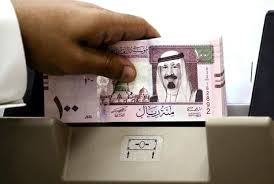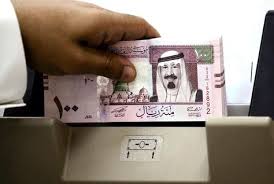
There are signs of easing of the worst cash squeeze at Saudi Arabian banks ever since the financial crisis.
In a sign that government measures to alleviate a liquidity shortage are working, there was a significant drop which is by far the most in more than seven years in a key interest rate that is used to price loans in the kingdom late last week.
After noting a retreat last week for the first time since July, there was a decline of 2.2 basis points in the three-month Saudi Interbank Offered Rate in the kingdom. The country has been hit by severe cash crunch due to the dramatic and steady fall in the global price of crude oil. Oil has been the mainstay of the Saudi economy and hence it has been hit hard by the declining price trends.
Earlier last month, the world’s top oil exporter pledged to inject billions of riyals into the banking sector, cut weekly domestic debt issuance and conducted the biggest ever bond sale from an emerging market and the drop in the lending costs comes after the kingdom had taken these measures.
And to cope with falling crude prices and a ballooning budget deficit, the government withdrew deposits and sold more than $60 billion worth of local bonds since the start of 2015. As a result of these factors a seven-year high was reached by a rising interbank rate of the nation.
“We believe a large share of the $17.5 billion of international deposits recently raised by the kingdom has made its way to the bank-deposit book,” said Chiradeep Ghosh, a banking analyst at Securities & Investment Co. in Bahrain. He said that “interest rates should decline further after the surge in the last 12 months,” and should be taken alongside other steps by the central bank. He added that U.S. interest rate increases will remain a headwind.
According to a statement last week issued by the Saudi Arabian Monetary Agency or the central bank of the country which is known by this name, in order to “enhance the domestic monetary conditions,” the Saudi Arabian Monetary Agency cut its weekly debt issuance to 3 billion riyals ($800 million) from 9 billion riyals starting Sunday even as the central bank introduced 90-day repurchase agreements.
In addition to the existing overnight operation, seven-day and 28-day repurchase agreements were introduced and an injection of about 20 billion riyals for banks via deposits from state-run companies was started by the regulator which was announced last month.
On Sunday, there was a drop to reach 2.36 percent for the Saibor, as the rate is known. With a reduction of 15 basis points, the data show that the National Commercial Bank made the biggest cut to its submission. And in what is the longest sequence of gains since they started trading in November 2014, the Jeddah-based lender’s shares soared 30 percent in the eight days through Sunday in Riyadh.
(Source:www.bloomberg.com)
In a sign that government measures to alleviate a liquidity shortage are working, there was a significant drop which is by far the most in more than seven years in a key interest rate that is used to price loans in the kingdom late last week.
After noting a retreat last week for the first time since July, there was a decline of 2.2 basis points in the three-month Saudi Interbank Offered Rate in the kingdom. The country has been hit by severe cash crunch due to the dramatic and steady fall in the global price of crude oil. Oil has been the mainstay of the Saudi economy and hence it has been hit hard by the declining price trends.
Earlier last month, the world’s top oil exporter pledged to inject billions of riyals into the banking sector, cut weekly domestic debt issuance and conducted the biggest ever bond sale from an emerging market and the drop in the lending costs comes after the kingdom had taken these measures.
And to cope with falling crude prices and a ballooning budget deficit, the government withdrew deposits and sold more than $60 billion worth of local bonds since the start of 2015. As a result of these factors a seven-year high was reached by a rising interbank rate of the nation.
“We believe a large share of the $17.5 billion of international deposits recently raised by the kingdom has made its way to the bank-deposit book,” said Chiradeep Ghosh, a banking analyst at Securities & Investment Co. in Bahrain. He said that “interest rates should decline further after the surge in the last 12 months,” and should be taken alongside other steps by the central bank. He added that U.S. interest rate increases will remain a headwind.
According to a statement last week issued by the Saudi Arabian Monetary Agency or the central bank of the country which is known by this name, in order to “enhance the domestic monetary conditions,” the Saudi Arabian Monetary Agency cut its weekly debt issuance to 3 billion riyals ($800 million) from 9 billion riyals starting Sunday even as the central bank introduced 90-day repurchase agreements.
In addition to the existing overnight operation, seven-day and 28-day repurchase agreements were introduced and an injection of about 20 billion riyals for banks via deposits from state-run companies was started by the regulator which was announced last month.
On Sunday, there was a drop to reach 2.36 percent for the Saibor, as the rate is known. With a reduction of 15 basis points, the data show that the National Commercial Bank made the biggest cut to its submission. And in what is the longest sequence of gains since they started trading in November 2014, the Jeddah-based lender’s shares soared 30 percent in the eight days through Sunday in Riyadh.
(Source:www.bloomberg.com)





